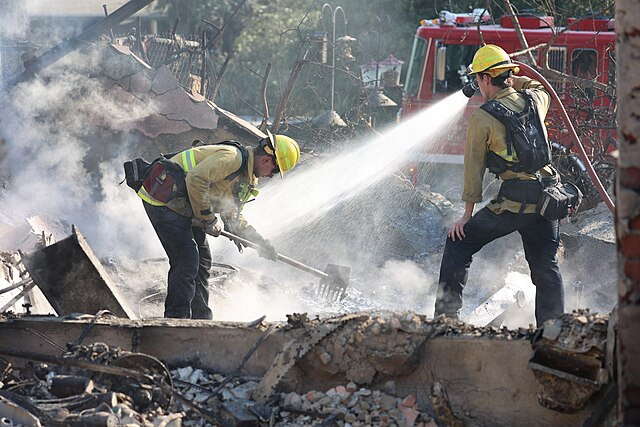Los Angeles has been grappling with the aftermath of two massive wildfires that have consumed over 40,000 acres, left 27 dead, and destroyed more than 12,000 structures. Firefighters battling the Eaton and Palisades fires have gained some respite as near-hurricane-strength winds have weakened, offering hope for containment after over a week of destruction.
"Please be assured that our firefighters continue to work 24/7 to achieve full containment of these wildfires as fast as we can," said Los Angeles County Fire Chief Anthony Marrone during a Thursday press conference. Despite progress, Chief Marrone cautioned that unburned dry fuel, coupled with low humidity, remains a significant threat.
Approximately 82,400 Californians remain under evacuation orders, with many still uncertain about the fate of their homes and possessions. Los Angeles County Sheriff Robert Luna reported 47 arrests linked to looting and curfew violations in the evacuated areas.
Some evacuation orders were lifted on Thursday afternoon, allowing limited reentry to certain neighborhoods. However, residents were advised to wear protective clothing and masks to avoid exposure to hazardous debris. "Returning after a fire can be overwhelming," the Altadena Sheriff's Station noted in a Facebook post, encouraging residents to seek support if needed.
The Palisades Fire, the largest of the two, has burned 24,000 acres and is 20% contained. The Eaton Fire, which has consumed over 14,000 acres, is 55% contained, according to Jim Hudson, a Cal Fire incident manager. Officials confirmed two additional deaths on Thursday, bringing the death toll to 27.
As firefighters continue their battle, the focus is beginning to shift toward recovery and rebuilding. The devastation covers an area three times the size of Manhattan, making it one of the most significant natural disasters in Southern California's history.
"Recognizing the health risks, the county has prohibited any cleanup or removal of fire debris until a hazardous materials inspection is completed," said Mark Pestrella, Los Angeles County Public Works Director. Hazards include unstable hillsides and toxic debris, which could lead to landslides and further complications once rain returns.
Mayor Karen Bass issued an executive order aimed at expediting the rebuilding process. However, rebuilding in fire-prone areas raises questions about sustainability and resilience in an age of climate change.
"Are we just inviting another problem down the road?" asked Michael Hricak, an adjunct professor of architecture at the University of Southern California. He emphasized the importance of using fire-resistant materials and designs to mitigate future risks.
A recent study by climate scientists at Climameter linked the wildfires to meteorological conditions exacerbated by human-induced climate change. The study highlighted that current conditions in the affected areas are warmer, drier, and windier than historical norms.
For residents like Michele Baron, who lost her Pacific Palisades apartment of 21 years, the trauma is overwhelming. "Now that I can go anywhere, I kind of don't want to," Baron said after recovering a few salvaged items.






